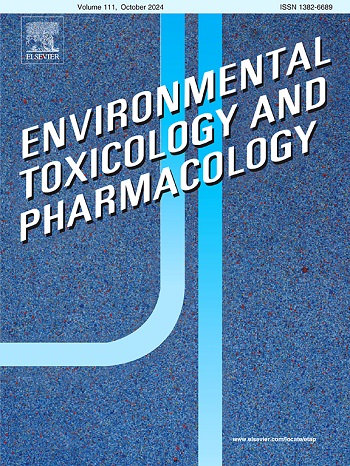Pesticide residues in honey: Agricultural landscapes and commercial wax foundation sheets as potential routes of chronic exposure for honey bees
IF 4.2
3区 环境科学与生态学
Q2 ENVIRONMENTAL SCIENCES
引用次数: 0
Abstract
Pesticides pose significant threats to pollinators, and honey bees are frequently exposed through foraging and beekeeping practices. We assessed honey bee pesticide exposure by analyzing 92 pesticide residues in honey from 30 hobbyist apiaries across Massachusetts, along with store-bought honey and commercial wax foundation. For all samples, we calculated the risk of multiresidue toxicity to honey bees and assessed the role of landscape composition in predicting pesticides in local honey. Both honey and wax contained multiple pesticides, particularly neonicotinoids and piperonyl butoxide. Store-bought honey accumulated at least two times more residues than local, but did not differ significantly in toxicity. Overall, honey toxicity levels remained below thresholds of concern for bees and human consumption. Although our study had low agricultural land (∼6 %), croplands were positively correlated with pesticides in honey, while wetlands (∼ 15 %) were negatively correlated. Additionally, our study suggests that commercial wax exacerbates pesticide exposure.
蜂蜜中的农药残留:农业景观和商业蜡基薄片是蜜蜂长期接触农药的潜在途径
农药对传粉媒介构成重大威胁,蜜蜂经常在觅食和养蜂过程中暴露于农药中。我们通过分析马萨诸塞州30个业余养蜂场蜂蜜中的92种农药残留,以及商店购买的蜂蜜和商业蜡底,评估了蜜蜂的农药暴露情况。对于所有样本,我们计算了多重残留物对蜜蜂的毒性风险,并评估了景观组成在预测当地蜂蜜中农药含量方面的作用。蜂蜜和蜂蜡都含有多种农药,尤其是新烟碱类和胡椒酰丁醇。商店购买的蜂蜜积累的残留物至少是当地蜂蜜的两倍,但毒性没有显着差异。总体而言,蜂蜜的毒性水平仍然低于蜜蜂和人类消费的关注阈值。虽然我们研究的农业用地很少(~ 6 %),但农田与蜂蜜中的农药呈正相关,而湿地(~ 15 %)呈负相关。此外,我们的研究表明,商业蜡加剧了农药暴露。
本文章由计算机程序翻译,如有差异,请以英文原文为准。
求助全文
约1分钟内获得全文
求助全文
来源期刊
CiteScore
7.00
自引率
4.70%
发文量
185
审稿时长
34 days
期刊介绍:
Environmental Toxicology and Pharmacology publishes the results of studies concerning toxic and pharmacological effects of (human and veterinary) drugs and of environmental contaminants in animals and man.
Areas of special interest are: molecular mechanisms of toxicity, biotransformation and toxicokinetics (including toxicokinetic modelling), molecular, biochemical and physiological mechanisms explaining differences in sensitivity between species and individuals, the characterisation of pathophysiological models and mechanisms involved in the development of effects and the identification of biological markers that can be used to study exposure and effects in man and animals.
In addition to full length papers, short communications, full-length reviews and mini-reviews, Environmental Toxicology and Pharmacology will publish in depth assessments of special problem areas. The latter publications may exceed the length of a full length paper three to fourfold. A basic requirement is that the assessments are made under the auspices of international groups of leading experts in the fields concerned. The information examined may either consist of data that were already published, or of new data that were obtained within the framework of collaborative research programmes. Provision is also made for the acceptance of minireviews on (classes of) compounds, toxicities or mechanisms, debating recent advances in rapidly developing fields that fall within the scope of the journal.

 求助内容:
求助内容: 应助结果提醒方式:
应助结果提醒方式:


